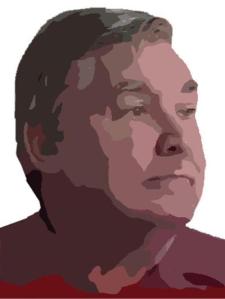
David W. answered • 01/13/17
Tutor
4.7
(90)
Experienced Prof
The typical Venn Diagram problem presents a sequence of values for the area in the diagram going from the outside in.
However, the solution is usually done in the opposite direction – from the inside out. So, you process the statements in the reverse order or in some other logical order.
The numbers must add up. That is very important.
In a Venn Diagram, there is a “Universe” (110 dormitory students) and there are interconnecting circles (AL, PT, and DH).
This diagram looks like this (imagine interconnecting circles AL=abce; PT=acdf; DH=abdg):
Universe = 110
However, the solution is usually done in the opposite direction – from the inside out. So, you process the statements in the reverse order or in some other logical order.
The numbers must add up. That is very important.
In a Venn Diagram, there is a “Universe” (110 dormitory students) and there are interconnecting circles (AL, PT, and DH).
This diagram looks like this (imagine interconnecting circles AL=abce; PT=acdf; DH=abdg):
Universe = 110
AL PT
e c f
a
b d
g
DH
25 liked AL but not PT means e + b = 25 [eq1]
15 liked AL only means e = 15 [eq2]
58 liked AL means e+a+b+c = 58 [eq3]
63 liked PT means a+c+d+f = 63 [eq4]
27 liked DH means a+b+d+g = 27 [eq5]
25 liked PT and AL but not DH means c = 25 [eq6]
17 liked PT and DH means a+d = 17 [eq7]
Let’s find all of the values a-g:
15 liked AL only means [eq2] e = 15
Use [eq2] with [eq1] to determine that: b=10
Consider [eq3] with [eq6] and e=15 and b=10, so: a=8
Consider [eq7] with a=8, so: d=9
Consider [eq4] with a,c,d known, so: f=21
Are all 110 students represented?
Is 8+10+25+9+15+21 = 110 ? not yet, so: g= 22
Questions:
(a) How many liked PT or DH? “or” means add all areas;
a+b+c+d+f+g = 8+10+25+9+15+21 = 88
(b) How many liked all three? a = 8
(c) How many liked only DH? g = 22
25 liked AL but not PT means e + b = 25 [eq1]
15 liked AL only means e = 15 [eq2]
58 liked AL means e+a+b+c = 58 [eq3]
63 liked PT means a+c+d+f = 63 [eq4]
27 liked DH means a+b+d+g = 27 [eq5]
25 liked PT and AL but not DH means c = 25 [eq6]
17 liked PT and DH means a+d = 17 [eq7]
Let’s find all of the values a-g:
15 liked AL only means [eq2] e = 15
Use [eq2] with [eq1] to determine that: b=10
Consider [eq3] with [eq6] and e=15 and b=10, so: a=8
Consider [eq7] with a=8, so: d=9
Consider [eq4] with a,c,d known, so: f=21
Are all 110 students represented?
Is 8+10+25+9+15+21 = 110 ? not yet, so: g= 22
Questions:
(a) How many liked PT or DH? “or” means add all areas;
a+b+c+d+f+g = 8+10+25+9+15+21 = 88
(b) How many liked all three? a = 8
(c) How many liked only DH? g = 22




